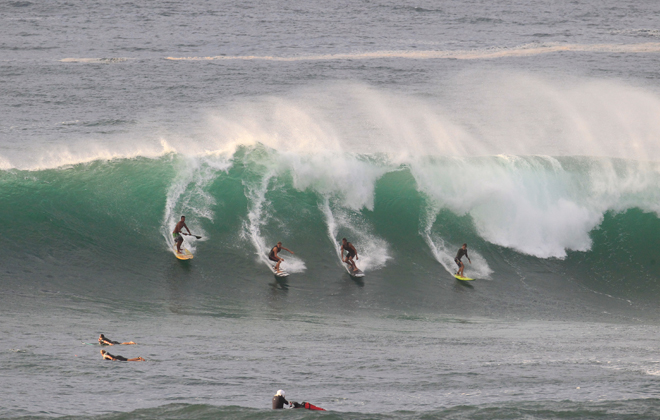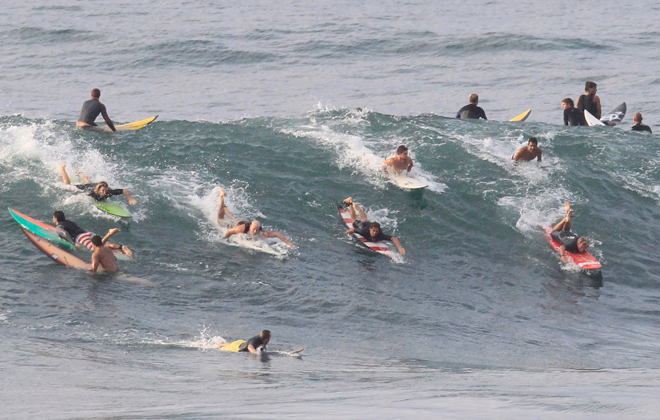As a large swell continues to pound the North Shore, surfing enthusiasts are stoked by early signs for steady big surf this winter.
Jodi Wilmott, spokeswoman for the Reef Hawaiian Pro surfing contest, which will likely get underway Wednesday, said October was a good month for consistent surf on the North Shore.
"The vibe out here is definitely like it feels like it’s going to be a very good season," she said. "When it’s that consistent you can be pretty sure you’ve got a good season on tap."
She said Reef Hawaiian Pro officials will decide at 7 a.m. whether to start the four-day event at 8 a.m. at Alii Beach Park.
She said El Nino conditions, manifested by warmer sea temperatures, usually produce larger and consistent surf on the North Shore.
National Weather Service officials expect El Nino conditions to develop toward the end of the year.
A high-surf warning is in effect until 6 p.m. Wednesday along north and west shores of Niihau, Kauai, Oahu and Molokai, and along Maui’s north shoreline. On Hawaii island a high-surf advisory is in effect for north shores until 6 p.m.
Wilmott said the current swell is slow-fading, meaning it could linger for a few days, thereby allowing the competition to run four consecutive days, which has never happened in the two decades she’s been with the event.
She expects the surf at Haleiwa to hit the largest possible wave-riding heights — just below the level at which waves wash out and become unrideable. Also, Wilmott said surfing conditions are expected to be good about 100 yards offshore, giving spectators a dramatic view of giant surf.
The Weather Service said surf would peak Tuesday night at 25 to 35 feet on Kauai and 20 to 30 feet on the north shores of Oahu and Maui. But surf was slated to remain about 15 to 25 feet on Oahu’s North Shore on Wednesday.
Waves will remain high through this weekend, when a new north swell will arrive, boosting surf back to near advisory levels Monday, according to the Weather Service.
Peter Donaldson, a Weather Service forecaster, said surf will probably not fall below 10 feet on the North Shore before the next swell arrives.
The current swell is long-lasting, Donaldson said, because it was generated by an enormous storm in the Gulf of Alaska that produced waves over a wide area, allowing surf to reach the islands even as the storm moved across the Pacific. Donaldson also said El Nino conditions usually lead to bigger surf on the North Shore because of storms forming farther north in the Pacific. Those storms don’t strongly affect Hawaii, but create surf that reaches the islands.




